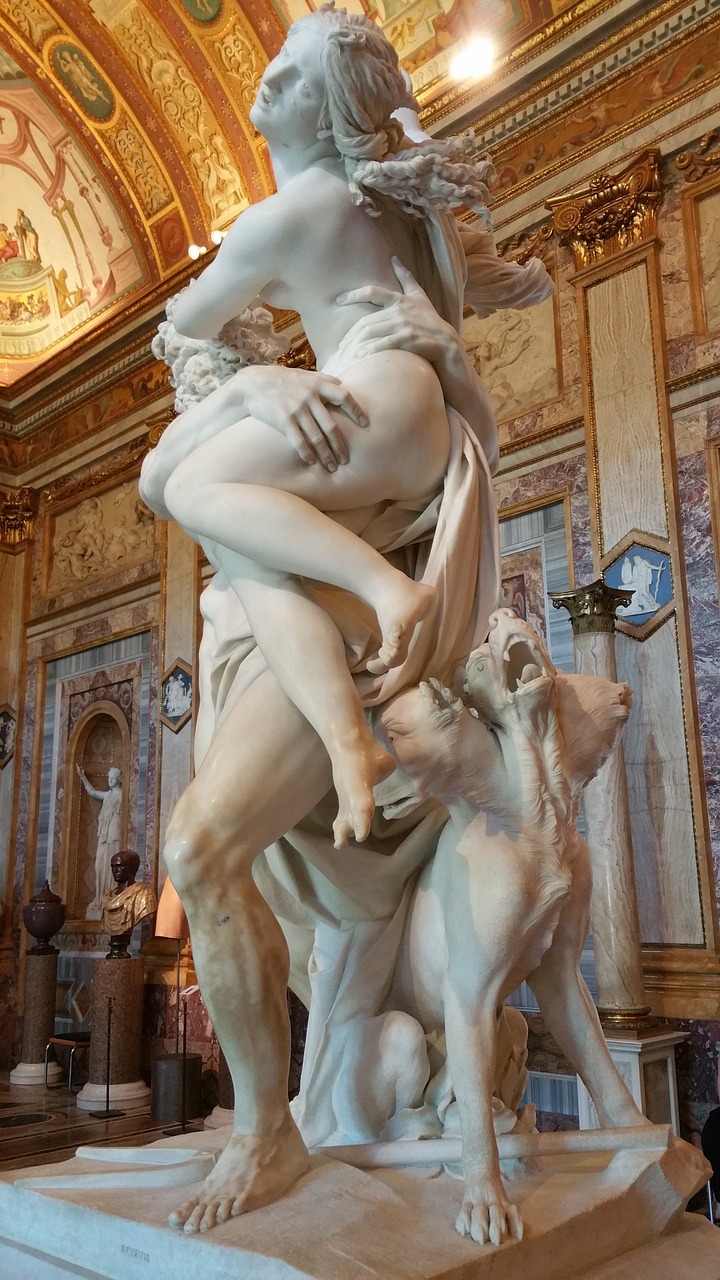The Abduction of Proserpina: A Roman Perspective
Introduction to Proserpina
The story of the abduction of Proserpina, known as Persphone in Greek mythology, unfolds a rich narrative within the framework of Roman mythology. This tale depicts her tragic union with Pluto, the ruler of the underworld. This rendition highlights various Latin interpretations, notably Ovid’s renowned “Metamorphoses,” alongside contributions from other poets and writers of antiquity.
The Tale Begins: Pluto’s Pursuit
The narrative commences in the verdant landscape of Sicily, where the young goddess Proserpina relishes the joys of spring, gathering flowers with her friends. Pluto, captivated by her beauty, orchestrates her kidnapping at the behest of Cupid, who is compelled by Venus to assist in this plot. As Proserpina picks delicate blossoms, Pluto seizes the moment, abducting her with fervor and transporting her to the shadows of his realm.
In Ovid’s version, striking imagery brings this act to life: the earth trembles as Pluto traverses the land, driven in his chariot by dark horses, as he claims his bride. While Proserpina’s cries emanate through the fields, invoking her mother’s protection, the stark contrast between their realms underscores the tragic nature of her fate.
Ceres’ Despair
As news of Proserpina’s abduction spreads, Ceres, the goddess of agriculture and mother of Proserpina, is engulfed in anguish. Her desperate quest spans the globe, reflecting the depth of her sorrow. Throughout her search, she illuminates the night with torches ignited by the fires of Aetna, pleading for any sign of her daughter. Eventually, her tiresome journey leads her to a grief-stricken nymph named Cyane, who, despite her transformation and inability to verbally communicate, provides Ceres with evidence of Proserpina’s fate—a ribbon that had fallen from the goddess’s grasp as she was taken.
A Mother’s Fury
Moved to indignation by the betrayal her daughter faced, Ceres withdraws her blessings from the earth, leading to barren fields and famine. Essentially, this act of defiance against the divine order reveals the interconnectedness of life, growth, and the maternal bond. Ceres’ fury disrupts nature, echoing through the lands, as she curses the soil and condemns its inhabitants to strife, displaying her desperation to reclaim her daughter.
Revelation and Resolutions
During her lamentation, Ceres learns from the waters that Proserpina is wed to Pluto, a revelation that darkens her heart. She confronts Jupiter, her brother and ruler of the gods, imploring him to rectify the wrong inflicted upon her child. Jupiter, embodying wisdom and balance, proposes a solution that would allow Proserpina to split her time between both realms, contingent upon the stipulation that she had not partaken of food during her captivity.
However, fate intervenes. It is revealed that Proserpina, driven by curiosity in the underworld, had tasted pomegranate seeds—food that binds her to Pluto. Consequently, this act seals her fate, forcing her to divide her time between her mother and her husband. The duality of her existence as both queen of the underworld and goddess of spring reflects the cyclical nature of life and death, marked by the changes of the seasons.
Conclusion: The Cycle of Life
Ultimately, Proserpina’s dual existence enriches the mythology surrounding her character, embodying the paradoxes of life and loss, joy, and sorrow. She reigns as a beacon of springtime and rebirth, yet also acknowledges the darkness of her other life. The tale concludes with Ceres once again embracing her daughter, with nature bursting back to life, showcasing the deep connection between mythology and the human experience.



